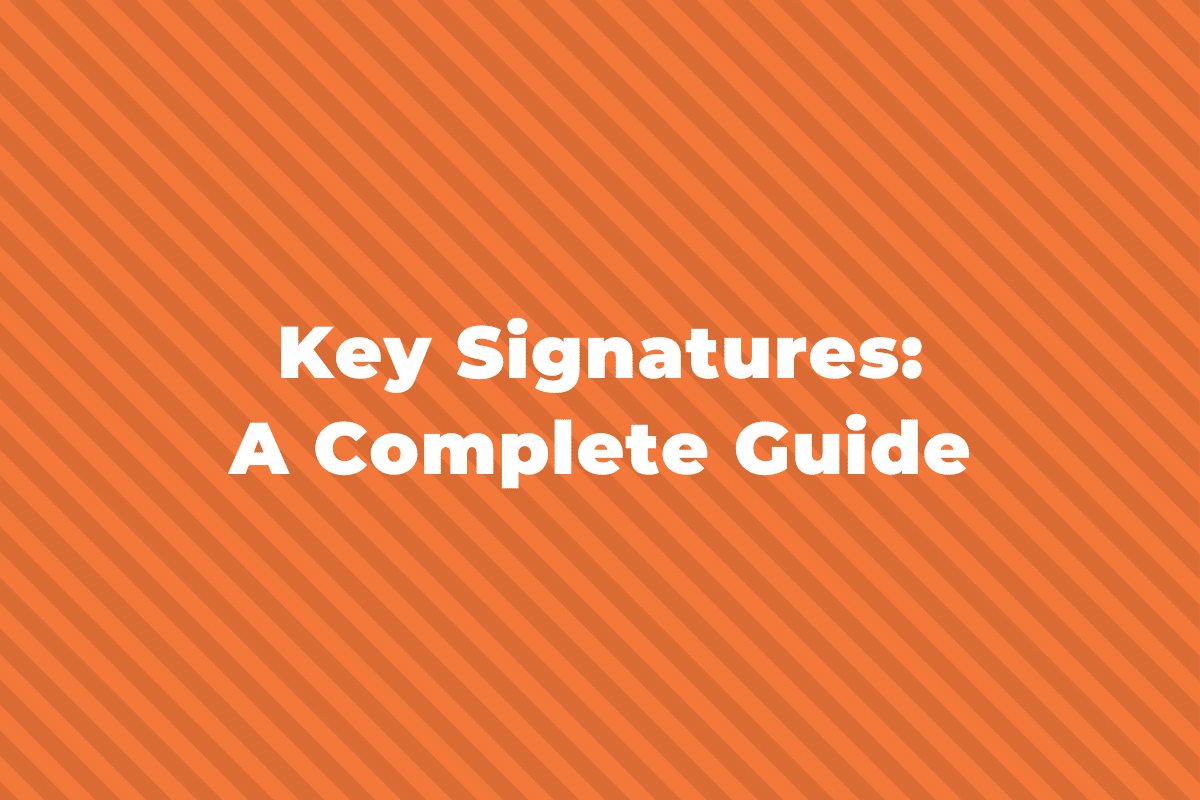The seventh and final mode of the major scale to learn is the Locrian Mode. It is probably the mode you are least likely to see in a piece of music, but it is important to learn all the same.
In this post, we’ll take a look at the Locrian mode. We’ll learn what it is, how to play it, and why it’s so rare. First, however, here is a quick recap of what music modes are.
What is a mode?
In music, a mode is a lot like a scale – it starts on a note and goes up (or down) through the rest of the notes until it reaches that same note again. Think of a major or minor scale.
However, modes are different from scales in their relationship to each of the other modes.
There are seven modes, and they are based on the seven notes of the major scale.
Each different mode is made by starting the major scale on a different note, and playing the scale from there.
For example, here are the modes of the C Major scale.
| Modal scales | Notes of the mode |
| C Ionian mode | C – D – E – F – G – A – B |
| D Dorian mode | D – E – F – G – A – B – C |
| E Phrygian mode | E – F – G – A – B – C – D |
| F Lydian mode | F – G – A – B – C – D – E |
| G Mixolydian mode | G – A – B – C – D – E – F |
| A Aeolian mode | A – B – C – D – E – F – G |
| B Locrian mode | B – C – D – E – F – G – A |
What is the Locrian mode?
As you can see in the table above, the Locrian mode is the final mode, starting on the seventh note of the major scale.
In C Major, the Locrian mode starts on the note B, and because of this it is often referred to as the B Locrian mode.
Here is a picture of the B Locrian scale.

The Locrian mode uses this formula of semitones and tones for its scale: S – T – T – S – T – T – T
This, in half and whole steps, is: H – W – W – H – W – W – W
Using this formula, you can play a Locrian scale in any key, starting on any note.
Degrees of the Locrian scale
The Locrian mode is one of the four minor modes (the others being the dorian, aeolian, and phrygian modes), which means the 3rd scale degree is one semitone lower than the 3rd of the major scale.
The Locrian mode is closest in similarities to the Phrygian mode, which also has a lowered (minor) 2nd, but it is even more minor, because it also has a lowered (diminished) 5th scale degree.
It is the only mode to have a diminished 5th.
Here are the seven scale degrees of the Locrian mode.
- 1. Root
- 2. Minor second
- 3. Minor third
- 4. Perfect fourth
- 5. Diminished fifth
- 6. Minor sixth
- 7. Minor seventh

If you listed the modes in order from brightest, or most major sounding, to the darkest, most minor sounding, the Locrian mode would be at the very end.
It is the darkest and most minor mode due to so many of its notes being flattened.
Examples of music in the Locrian mode
The Locrian mode is very rare to hear in music.
Because it is the only mode with a diminished 5th scale degree, it often does not sound like a normal mode or scale.
It sounds like it is unfinished, like someone simply stopped playing or singing in the middle of a melody.
For example, listen to this English folk song, called “Dust to Dust” by John Kirkpatrick.
This song is one of the few vocal melodies written in the Locrian mode.
As you can hear, the beginning and ends of the phrases sound like they should continue, and seem to end abruptly.
This is because the Locrian mode is just one note away from the Ionian mode, which is a major scale.
So, in addition to sounding very dark, it feels like it wants to shift or resolve into a different mode altogether.
Another song that uses the locrian mode is the Björk song “Army of Me” which features a number of Locrian melodies.
There are very few pieces that are totally in the Locrian mode, like these two songs.
There are passages of “Jeux” by Claude Debussy that uses the Locrian mode, as well as Rachmaninov’s “Prelude in B Minor” and Sibelius’ “Symphony No. 4 in A Minor”, but these are short passages that resolve quickly to other modes.
List of the Locrian modes
Here is a list of all of the locrian modes.
| Key | Notes in the Locrian mode |
| C | C – Db – Eb – F – Gb – Ab – Bb – C |
| C♯ | C# – D – E – F# – G – A – B – C# |
| Db | Db – Ebb – Fb – Gb – Abb – Bbb – Cb – Db |
| D | D – Eb – F – G – Ab – Bb – C – D |
| D# | D# – E – F# – G# – A – B – C# – D# |
| Eb | Eb – Fb – Gb – Ab – Bbb – Cb – Db – Eb |
| E | E – F – G – A – Bb – C – D – E |
| F | F – Gb – Ab – Bb – Cb – Db – Eb – F |
| F# | F# – G – A – B – C – D – E – F# |
| Gb | Gb – Abb – Bbb – Cb – Dbb – Ebb – Fb – Gb |
| G | G – Ab – Bb – C – Db – Eb – F – G |
| G# | G# – A – B – C# – D – E – F# – G# |
| Ab | Ab – Bbb – Cb – Db – Ebb – Fb – Gb – Ab |
| A | A – Bb – C – D – Eb – F – G – A |
| A# | A# – B – C# – D# – E – F# – G# – A# |
| Bb | Bb – Cb – Db – Eb – Fb – Gb – Ab – Bb |
| B | B – C – D – E – F – G – A – B |
Summing up the Locrian mode
The Locrian mode is the last and probably least popular of the seven diatonic modes.
It is very dark and minor, and melodies written in it often feel incomplete.
For example, play the white notes on the piano from B to B, and you’ll notice that when you arrive at the final B, the note seems to hang there and lean toward the C above it.
We hope that this post has helped to illustrate what the Locrian mode is, where it is found, and how it can be used in music.




